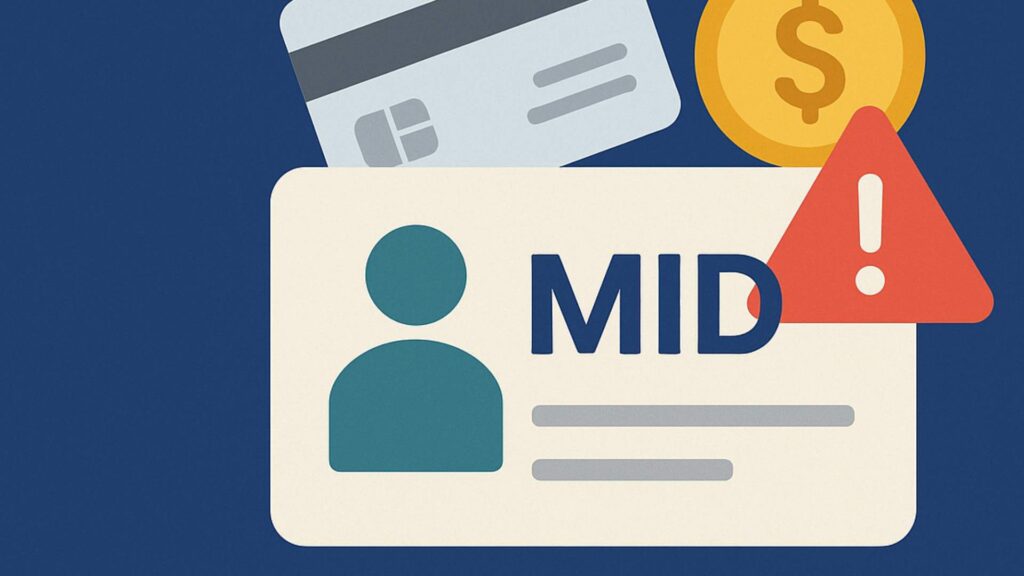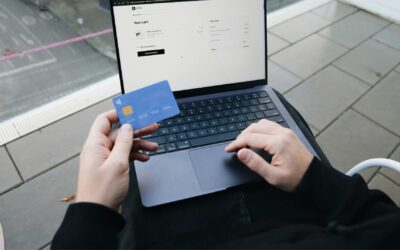The Merchant ID (MID), a string of digits — often buried in onboarding forms and statements — is the passport to a merchant’s entire payment existence. It represents identity, trust, and liability wrapped into a code. Without it, no transactions can flow. With the wrong one, a business can find itself paying excessive fees, cut off without warning, or silently monitored by risk teams looking for reasons to close the account.
The hidden DNA of payments
A Merchant ID (MID) is assigned by an acquirer when a business is approved for card processing. To banks and schemes, it’s the identifier that links a merchant to every transaction, every chargeback, and every fraud attempt. To regulators, it’s the thread that ties a merchant to compliance obligations.
For high-risk sectors — gaming, travel, adult, CBD, nutraceuticals — the MID carries heavier baggage. Unlike low-risk retailers, who may operate under aggregated IDs with minimal scrutiny, high-risk merchants are flagged and categorised from day one. Their MID becomes a signal: to schemes, to issuers, to fraud monitoring systems.
Why might a single MID be fragile?
Running all your transactions through one MID is like placing all your chips on a single square of the roulette table. If chargeback ratios spike or regulators tighten thresholds, the MID can be suspended overnight. For many high-risk operators, this means frozen settlement funds and an abrupt halt to trading.
Financial institutions rarely apologise. From their perspective, one MID equals one risk profile. If that profile fails, the easiest solution is to terminate. Merchants are often left scrambling for alternatives, discovering too late that MIDs are not easily portable between acquirers.

The role of multiple MIDs
To reduce this fragility, many high-risk businesses secure multiple MIDs, sometimes across different acquiring banks or jurisdictions. The logic is simple: spread the risk. If one MID comes under scrutiny or is capped by volume limits, another can carry the load.
But this is where complexity sets in. More MIDs mean more monitoring, more reconciliation headaches, and often higher costs. Some acquirers use this dependency to lock merchants into costly packages, bundling “risk management” with little transparency. The merchant pays for redundancy, while the institution profits from the anxiety it created.
MID monitoring: who watches whom?
What most merchants don’t realise is that their MID is constantly analysed — by acquirers, by card schemes, by fraud-detection engines. A sudden spike in cross-border traffic, an unusual pattern of refunds, or too many soft declines can flag the MID as problematic.
In theory, this protects the payments ecosystem. In practice, it often punishes merchants for factors outside their control: airlines grounded by strikes, gaming platforms hit by friendly fraud, or subscription models where customers forget their sign-ups. The MID doesn’t explain the nuance; it only records the ratios. And in a high-risk setting, ratios matter more than context.
MID sharing and shadow practices
There’s also a murkier side. Some merchants, unable to secure their own MIDs, resort to MID sharing — piggybacking on another business’s credentials. This is not only frowned upon but can breach scheme rules outright. If discovered, it can lead to blacklisting, reputational harm, and loss of access across multiple acquirers.
Yet the very existence of this shadow practice tells a story: access to legitimate MIDs is scarce, and institutions hold disproportionate power in deciding who gets them. In high-risk payments, the MID gate is often narrower than the demand for it.
The cost of a number
A MID doesn’t just govern whether you can process; it shapes the economics of processing itself. Acquirers set rolling reserves, transaction fees, and volume caps based on the MID’s perceived risk. One merchant may face 2.5% fees under a “clean” MID profile, while another with the same turnover pays double because their MID carries historical chargeback scars.
Merchants rarely get to argue the case. The MID is treated as fact, and financial institutions have little incentive to revisit their scoring models. As a result, many high-risk businesses find themselves subsidising their own risk profile indefinitely, even after years of clean trading.

What merchants should demand?
To avoid being cornered by their own identifiers, high-risk merchants need to push for:
- Clarity on MID terms: Which activities are allowed, which are capped, and what triggers termination.
- Portability assurances: If switching acquirers, can transaction history and chargeback data move with you?
- Fair reserve structures: Reserves should be risk-based and time-limited, not permanent drains on cash flow.
- Transparent monitoring: Merchants should see the same risk indicators that acquirers use to judge them.
Without these safeguards, merchants remain at the mercy of opaque models and sudden decisions.
Beyond the digits
In the wider payments landscape, the MID is a reminder of how identity works in finance. It is both permission and surveillance. It enables merchants to operate, but it also locks them into systems where decisions are made far away, with little explanation.
For low-risk retailers, the MID may be background noise. For high-risk merchants, it can mean the difference between stability and sudden collapse. And while tokenisation, smart routing, and alternative payment methods are reshaping the future, the MID remains the core passport to the card world.
It is not just a number. It is the silent judge of risk — and in high-risk payments, its verdict is never neutral.
Take the next step
If you’re operating in a high-risk sector, review your current MID arrangements before they review you. Our experts can help assess portability, resilience, and hidden cost drivers — ensuring your MID works for your business, not against it.
Don’t hesitate to schedule a free consultation with our team.
For further insights, read our article: “How Tokenisation Works in High-Risk Payment Environments?”
Disclaimer
Widelia and its affiliates do not provide tax, investment, legal, or accounting advice. Material on this page has been prepared for informational purposes only, and is not intended to provide, and should not be relied on for, tax, investment, legal or accounting advice. You should consult your own tax, legal and accounting advisors before engaging in any transaction. Please consult https://widelia.com/disclaimer/ for more information.









